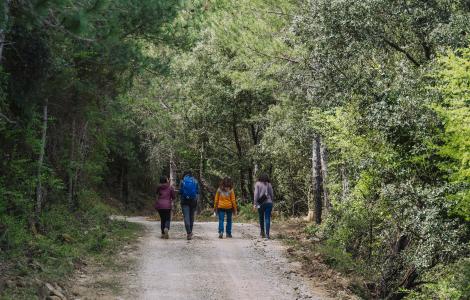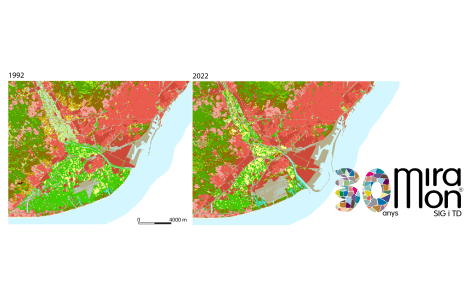The youngest ecosystems are those most sensitive to climate change

CREAF participated in a study which proposes that in order to understand the full impact of climate change, it is not enough to study just protected natural areas, which are mature and able to handle change; instead, it is important to focus on the study of those ecosystems which have been altered and are still recovering.
A study published in the journal Nature Communications finds that ecosystems which are recovering from a disturbance are more susceptible to climate change. The international team of researchers under the direction of Josep Peñuelas, CSIC research professor at CREAF, has opened the door to a new vision for study of the effects of climate change, prioritizing the study of disturbed sites.
Ecosystems which have been altered, be it by natural factors or by human activity, can be left with uncovered terrain devoid of vegetation. To begin recovery a process of regeneration is begun which can take years. During the first phases of recovery, these natural areas are young or immature since the vegetation is in the process of development. Since they are unstable, they are very vulnerable to changes or activities in their vicinity, "that same as what happens with people, that we are more vulnerable in the first years of our lives," says Josep Peñuelas.
The study shows that climate change can negatively modify this process of recovery. Increases in temperature and lack of water can favour the growth of species which are not from the region and even make them more abundant than others. As a result, the landscape can change dramatically.
On the other hand, according to the researchers, mature ecosystems are better able to resist climate change because their vegetation is more stable and resilient against changes in their surroundings.
Human activity increases the frequency and severity of disturbances which destabilize ecosystems. As such, ecosystem responses to climate change will be become more rapid than those observed to date in mature ecosystems and as a consequence landscape-level changes can happen more quickly.
For 14 years scientists have simulated the effects of climate change in seven scrubland areas distributed throughout Europe. In each site they have monitored changes in vegetation, especially what species dominated and how their abundances changed. Each study area was divided into three parts, one with a prescribed drought, another with elevated temperature, and a third without any imposed conditions. Some of these scrublands had not been disturbed for a long time, while others had borne the brunt of plagues or recent fires, such as is the case of Garraf (Barcelona) which was burnt in 1994.
An advancement in knowledge about the real effect of climate change
The study reveals that we need to better understand the age and history of ecosystems to be able to predict with precision their response to climate change. "In the next 20 or 30 years it will be necessary to give special attention to young ecosystems," says Josep Peñuelas.
These results are important since "they tell us that we don't know the real magnitude of climate change. Up to now the majority of studies were undertaken in mature and unaltered natural environments, and for this reason we weren't seeing the real effect of this global phenomenon," adds the Catalonian researcher.
Article:
"Increased sensitivity to climate change in disturbed ecosystems" György Kröel-Dulay, Johannes Ransijn, et al. Nature Communications, published Mar.24,
Noticias relacionadas

El IPBES publica dos informes para transformar la forma en que nos relacionamos con la naturaleza, conservarla y sobrevivir

El impacto social de la investigación se consolida en la cultura científica del CREAF


